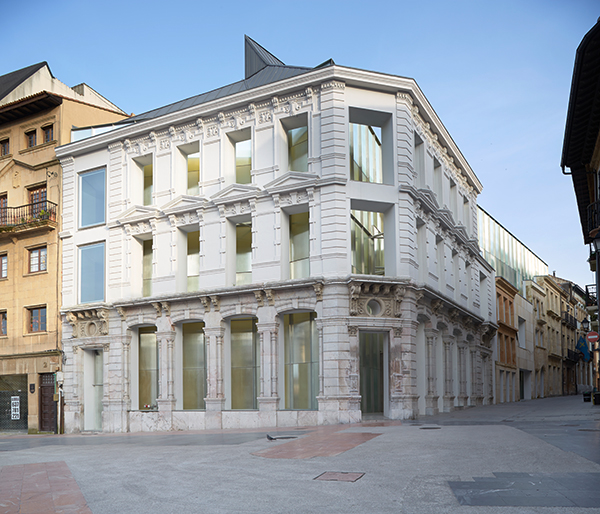This EU-funded project took over five existing buildings around the regional museum of Museo de Bellas Artes de Asturias in Oviedo and consolidated them, creating 3 500 m2 of useful area. The new space shows 208 works of contemporary art, and hosts cultural events, workshops and visits for schools.
Expansion of Spain’s Museo de Bellas Artes de Asturias unveils hidden glories
- 18 November 2016
Projects like this one help to regenerate the sense of community, not only in its cultural aspect, but also its educational and training one.
The museum was created in 1969, but did not open its doors to the public until 1980. Due to an exponential increase in art holdings, a significant part of its 1 500 works of art remained in storage and could not be seen by the public due to the lack of space.
Thanks to EU funds, the museum has doubled its exhibition area and is now able to display works by artists such as Anglada Camarasa, Picasso, Miro, Dali, alongside notable Asturian artists. It has also tackled the strong seasonality of the tourism sector: the number of visitors has increased by 57 % throughout the year.
A new multifunctional space
This project has triggered a sense of community around the museum, as it has become a meeting point for the city’s cultural life. Since its opening, a growing number of activities have been organised, such as temporary exhibitions, conferences, jazz and classical music concerts and educational activities for schools.
It has also put the museum on the cultural spotlight: it faces one of the most significant places in Oviedo, the Cathedral Basilica of the Holy Saviour. Together, they are the main attractions drawing a greater number of visitors, boosting local economy.
A regional art hub
The Museo de Bellas Artes de Asturias opened to the public in 1980 in the Palacio de Velarde, an outstanding Baroque architecture building. It was expanded for the first time in 1986, adding a 17th century palace known as ‘Casa de Oviedo-Portal’.
The collection initially consisted on funds from the former Provincial Council, increased over the past 35 years through purchases, donations and bequests from individuals. Its main acquisition came from Pedro Masaveu Peterson’s private collection, consisting of 410 works: this meant a major qualitative and quantitative step, which made the museum one of the most important regional art galleries in Spain.
This last expansion has been designed by the Navarran architect Francisco José Mangado Beloqui and was inaugurated in March 2015.
Now visitors can admire Spanish, Italian and Flemish paintings, as well as a complete collection of Asturian painting from the Baroque to nowadays. It has also sculptures, drawings and prints, photographs and industrial art works.
The Modern Wing shows a selection of contemporary art collections from the 20th and 21st centuries, following a chronological order beginning on the ground floor to end on the second floor. It also has an independent space on Floor -1, devoted to the Asturian sculptor José María Navascués.
It also displays art by Asturian artists like Evaristo Valle, Nicanor Piñole, Joaquín Vaquero, Paulino Vicente, Aurelio Suárez and Luis Fernández.
Currently, the museum has 21 employees, three of which are art technicians, two are administrative, four are assemblers, nine guards room, a librarian, a maintenance manager and the director.
Total investment and EU funding
Total investment for the project “Ampliación Museo de Bellas Artes Asturias (Oviedo)” is EUR 17 440 000, with the EU’s European Regional Development Fund contributing EUR 10 360 000 through the “Asturias” Operational Programme for the 2007-2013 programming period. The investment falls under the priority “Local and Urban Sustainable Development”.

